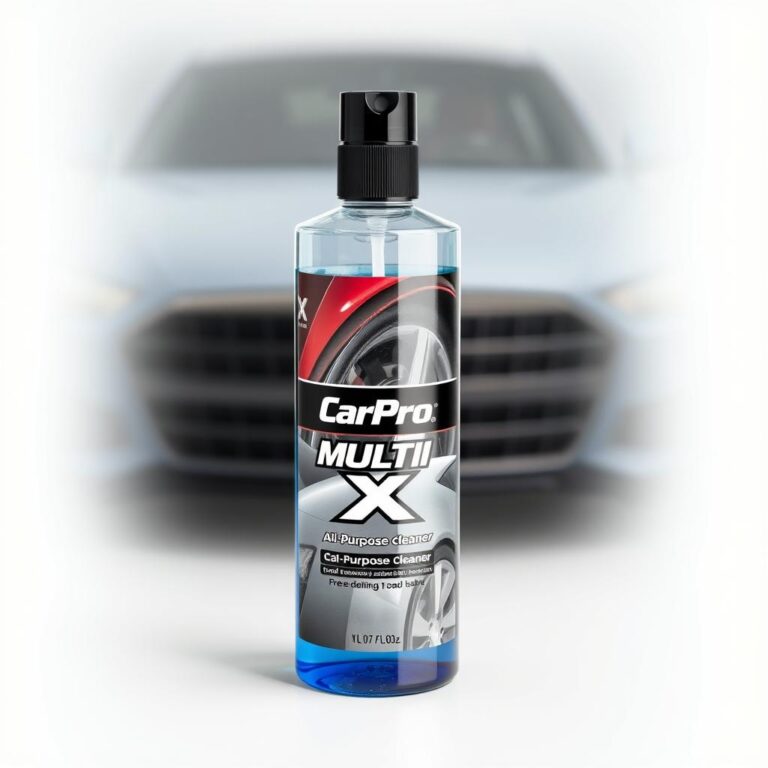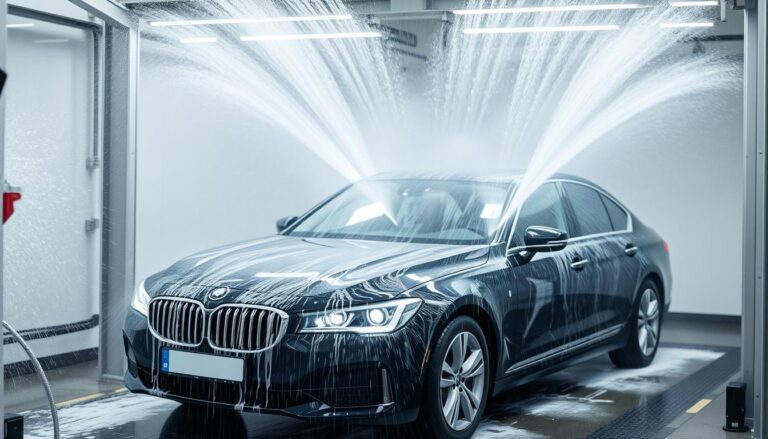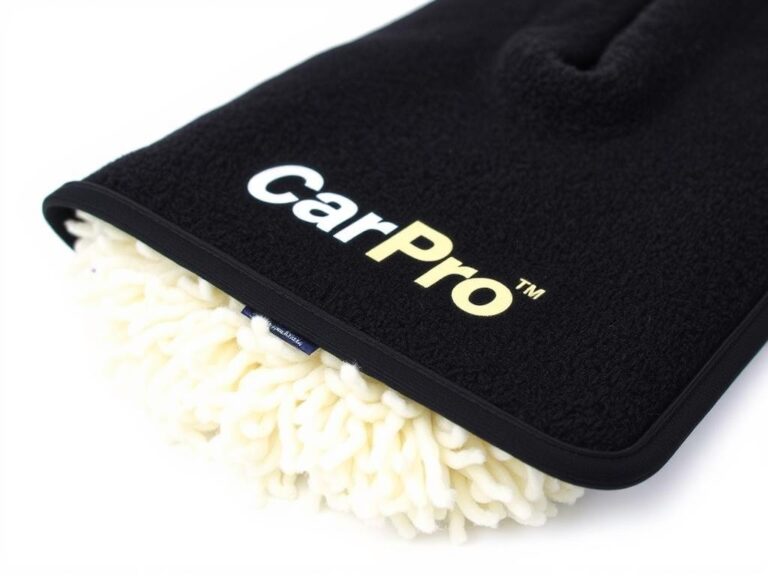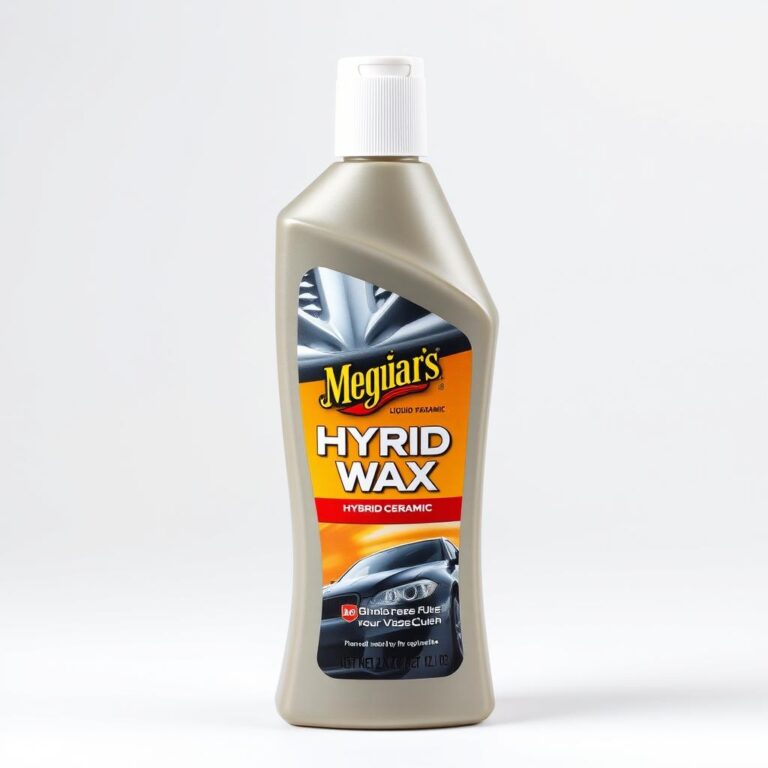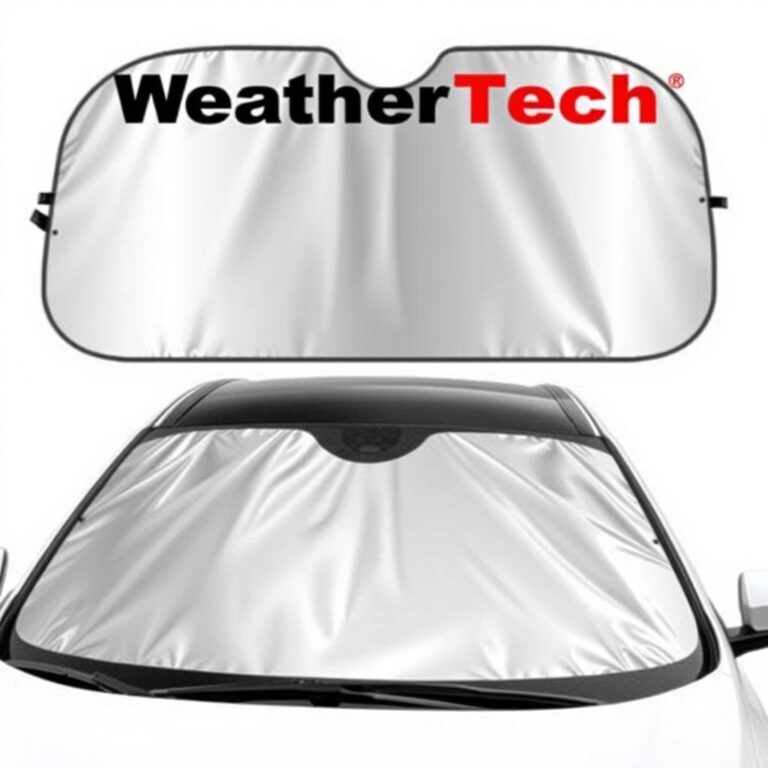Safely Remove Tree Sap from Car – Best Methods
For quick, safe paint results, use tools known for their strong solvent= isopropyl alcohol 70–91% and low abrasiveness= clay bar and high-lubricity detailer. To get tree sap off car paint without harm, wash with a pH-neutral solution first. Then, dab with 70–91% isopropyl alcohol using short times and soft wipes; use a lubricated clay bar if sap remains. This is a safe and effective way to clean tree sap from car finishes without causing haze, micro-scratches, or damage to the clear coat.
This guide offers steps to get tree sap off car surfaces. It uses advice from automaker paint care, pro detailers, and product sheets from Meguiar’s, 3M, and Griot’s Garage. You’ll learn the best methods for fresh or hard sap, when to use isopropyl alcohol or tar remover, and when to use a clay bar, polish, or get professional help.
Start careful and simple. Work on a cool panel in the shade to protect the clear coat. Clean with pH-neutral shampoo, use controlled times, and wipe gently to avoid scratches until needed. Isopropyl alcohol (70–91%) dissolves organic sap well without much risk. Tar removers help soften hard sap faster.
When comparing tree sap removal from car paint, we break down the options. Entity → attribute → value examples: isopropyl alcohol → concentration → 70–91%; clay bar → abrasiveness → low with enough lubricant; microfiber → GSM → 300–380 for safe removal. These details help pick the right solution based on what you have and your comfort level.
Prevention is key. The guide gives advice on tree sap cleaning routines and protective layers—wax, sealant, and ceramic coatings. These create hydrophobic barriers to lessen sap sticking and make future cleaning easier. With smart parking and these steps, you save time, money, and avoid risks with each wash. Follow this guide for fast, gentle, and effective tree sap removal methods that really work.
Understanding Tree Sap and Its Impact on Automotive Paint
To keep your car’s finish looking good, it’s key to understand what you’re up against. Tree sap consists of sugars, resins, and terpenes, substances trees produce to heal. These can soften and then harden on your car’s paint, especially when it’s warm, sticking strongly to it. Knowing how this works helps you remove tree sap smarter and prevent damage.
What tree sap is and why it bonds to clear coat
Clear coats on cars, usually made of polyurethane or acrylic urethane, are slightly porous. When your car heats up in the sun, sap can penetrate these tiny holes and stick better. As the sap hardens, it traps dirt. This is why it’s recommended to work on sap removal in the shade on a cool car surface.
How long sap can sit before it causes damage
How quickly sap harms your paint depends on several factors. If it’s hot and sunny, damage like etching can show up in just a few days. Once sap hardens, it might need more serious cleaning methods. Removing sap quickly can save you from needing to use harsher methods later.
Common tree species that leave stubborn residues
Different trees leave different kinds of sap. Pine gives off a thick sap that’s hard to remove. Spruce and fir leave a sticky residue that’s tough to clean when warm. Maple sap attracts dirt and sticks firmly. Eucalyptus and sweetgum sap, along with bird droppings, can make sap removal even trickier due to their composition.
| Tree Species | Residue Character | Heat/UV Behavior | Risk Window (approx.) | Practical Takeaway |
|---|---|---|---|---|
| Pine (Pinus) | Thick resin pitch; hard, glossy beads | Hardens rapidly; bonds tighter when warm | 24–72 hours | Prioritize prompt action; use targeted, effective tree sap removal methods |
| Spruce/Fir (Picea, Abies) | Sticky, UV-reactive smear | Spreads on hot panels; oxidizes into film | 48–72 hours | Work in shade; follow data-backed tree sap removal tips |
| Maple (Acer) | Sugary droplets that attract dust | Dries into bonded spots; dark halo possible | 2–4 days | Clean before full cure with gentle car sap removal techniques |
| Eucalyptus | Varnish-like dots; thin but tenacious | Cures to a slick, stubborn film | 48–96 hours | Expect tight adhesion; minimize heat load before removal |
| Sweetgum | Resin specks with high tack | Sets firm under sun; resists mild washes | 2–5 days | Plan staged, effective tree sap removal methods to avoid marring |
Signs You Need Immediate Tree Sap Removal
If you find sticky, amber, or clear spots on your car, act fast to protect its coat. On dark cars, these spots look like shiny dots; on light cars, they may turn slightly yellow. The risk is higher on the hood, roof, and trunk when they get hot. Clean any fresh sap off these areas within a day or two.
Check for dull circles or shiny streaks around sticky spots. They attract dust and won’t wash off easily. Try running a clean plastic bag over the area. If it feels rough, it’s time to clean off the tree sap from your car.
Don’t forget about your windshield. If your wipers are skipping or smearing, sap might be the cause. After washing your car, look for faint circles or blur where the sap hit. If sap won’t budge with a nail, it’s hardened and needs more effort to remove. This makes acting fast super important.
Same-day indicators often show up on warm afternoons. High temperatures make sap stick faster, especially on cars under maple, pine, or sweetgum trees. Catching these signs early can make cleaning easier and prevent damage.
| Indicator | What You See/Feel | Why It Matters | Time Sensitivity |
|---|---|---|---|
| Tacky beads on paint | Amber/clear dots; glossy on dark, yellowing on light | Fresh resin begins bonding to clear coat as it warms | Address within 24–48 hours |
| Matte halos or rainbow sheen | Dull ring or iridescent edge around droplet | Early chemical interaction signaling potential etch | Same day if sun-exposed |
| Dust-coated sticky patches | Grime clings; won’t rinse clean | Contamination load increases abrasion risk | As soon as noticed |
| Bag test drag | Snaggy feel through a plastic bag | Confirms bonded debris beyond normal wash film | Same day on horizontal panels |
| Wiper chatter/smear | Skipping blades, streaks across glass | Reduced visibility and blade wear | Immediate |
| Early etching | Faint rings or dull spots after washing | Clear coat already affected; delay worsens marks | Immediate |
| Cured droplet | Fingernail won’t dent the bead | Stronger method (IPA/tar remover or clay) required | Prioritize before heat cycles |
Keep these tips in mind when you park under certain trees in summer. Catching these signs early lets you clean sap off your car before it sets. This will keep your car’s surface in good shape. It makes cleaning easier and quicker.
Preparation and Safety Before You Start
Want clean results with no paint haze? First, set everything up. Use these car sap removal tips when the car’s panel is cool and you have your supplies ready. This prep lowers risks and makes removing sap more reliable.
Work in shade with cool panels. Keep it between 60–85°F. On hot surfaces, chemicals can stain. Touch the panel for 10 seconds. If it’s comfortable, you’re ready. This step prevents extra swirl marks when removing sap.
Shade, surface temperature, and why they matter
Cool paint helps solvents work better, making sap easier to clean. Heat can cause stains. Dust stays off in the shade, keeping your towel clean for sap removal.
Tools and supplies checklist for car sap removal
- pH-neutral car shampoo (pH ~7), two buckets with grit guards, microfiber wash mitt
- Plush 300–500 GSM microfiber towels; keep separate towels for chemicals
- Warm water (100–120°F) in a spray bottle for softening
- Isopropyl alcohol 70–91% (cut 1:1 for 35–45% working strength if desired)
- Dedicated tar/sap remover: 3M Adhesive Remover, Meguiar’s Heavy Duty Bug & Tar
- Clay bar or synthetic clay mitt; clay lubricant or detail spray
- Nitrile gloves, soft foam applicators, painter’s tape to isolate spots
- Gentle polish for finishing: Meguiar’s M205 or Sonax Perfect Finish with a soft foam pad
Having the right gear lets you remove sap effectively. Good towels and proper mixing reduce damage. This keeps sap removal consistent on all panels.
Paint-safe testing on an inconspicuous area
Always test on a hidden area first, like the lower rocker or behind the plate. Apply a bit, wait a bit, then check for damage. Avoid strong solvents on sensitive parts. This ensures your paint and car parts are safe.
Once your space, gear, and test are good, you can start removing sap. Whether it’s fresh or old, you can do it safely.
best way to remove tree sap from car
For quick, safe sap removal, match the solution to the sap’s condition. Heat and cleaning agents treat fresh sap well, while older sap requires solvents or clay. This guide demonstrates fast, safe methods to get rid of tree sap from your car.

Choosing the right method for fresh vs. cured sap
Warmth softens fresh sap. Use a warm-water compress and a gentle wash to ease it off, as heat loosens the sap.
Hard, cured sap won’t budge with just soap. Try a specific solvent, like 35–70% isopropyl alcohol or products from Meguiar’s or Griot’s Garage. For tough cases, a fine clay bar with lots of lubricant can remove the residue without scratching.
Step-by-step process for a safe, effective clean
- Rinse the panel to strip loose grit.
- Lay a microfiber soaked in warm water over the sap for 1–2 minutes to soften.
- Wash with a pH‑neutral shampoo, using light pressure; blot instead of scrubbing.
- If residue lingers, mask a small perimeter with tape to control contact.
- Apply a few drops of 35–70% isopropyl alcohol or a tar/sap remover to a foam applicator; dab the spot rather than flooding.
- Allow proper dwell—about 30–60 seconds for alcohol, 1–3 minutes per label for removers—keep it from drying. Lightly twist‑wipe to lift, then neutralize with soapy water and rinse.
- For stubborn specks, glide a fine clay bar over a well‑lubed surface in straight lines; inspect and fold clay often.
- Check under a high‑CRI light; if faint halos remain, spot‑polish with a finishing polish on a soft foam pad.
- Rewash and add protection, such as a wax or sealant, to reduce future bonding.
This plan outlines how to safely and effectively rid your car of sap. It starts with gentle methods, moving to more precise ones as needed.
When to stop DIY and call a professional detailer
- Visible etching: a crater or ring that stays after cleaning.
- Overspray‑like speckling across multiple panels.
- Delicate single‑stage paint or vintage finishes.
If you see signs like these, a pro can help. They have the tools and skills to fix it without harm. If not, the steps above will guide you to safely remove sap yourself, using effective methods.
Gentle Car Sap Removal Techniques Using Soap and Warm Water
Start with pH-neutral shampoo and manage the warmth for a safe first step. This gentle method protects the clear coat. It works best on fresh sap spots.
Mix and temperature: Use a pH-neutral wash like Griot’s Garage Car Wash at 0.5–1 oz per gallon. Fill a bucket with warm water, between 100–120°F, to soften the sap’s bonds. A bit of warmth helps remove tree sap without harming the paint.
Warm compress and wash: Put a warm, damp microfiber towel on the sap for a minute or two. Lift it, reheat, and apply again for fresh sap to reduce its stickiness by 30–50%. Use light pressure and straight movements to wash sap off the car without damaging the finish.
Technique details: Dab at the sap instead of scrubbing to avoid spreading it. Steer clear of dish soap, as its harshness can harm the car’s wax or sealant and dry out the trim. For glass, gently use a plastic razor to remove softened sap, then finish with an ammonia-free cleaner.
Always rinse well to avoid spots from drying soap. If sap persists after two gentle washes, consider a solvent-based cleaner instead of scrubbing harder. This preserves the car’s clear coat, aligning with gentle sap removal methods.
| Item | Entity | Attribute | Value | Why It Helps | CTA |
|---|---|---|---|---|---|
 |
Griot’s Garage Car Wash | pH | Neutral (≈7) | Gentle on sealants and coatings while supporting tree sap removal tips. | Check Price on Amazon |
| Premium Microfiber Towel | GSM | 350–500 | Thicker pile improves blotting to remove tree sap from car without marring. | Check Price on Amazon | |
| Plastic Razor Blade | Material | Polycarbonate | Safe on glass after warming; lifts softened sap cleanly. | Check Price on Amazon | |
| Wash Bucket + Grit Guard | Contamination Control | Separates debris | Reduces drag lines during gentle passes. | Check Price on Amazon |
Effective Tree Sap Removal Methods with Isopropyl Alcohol or Tar Remover
If you’re cleaning tree sap off your car, solvent-based methods work well. Use them on small 2×2-inch areas with a towel between 300–500 GSM. This is the safest way to remove tree sap without harming your car’s finish when soap isn’t enough.
What to expect: Isopropyl alcohol with 70–91% concentration gently loosens the sap. Branded tar removers are great for tougher spots. Both options can safely remove sap when used correctly and followed by a neutral wash.

Proper dwell times and wipe techniques
Apply 70–91% IPA to your car’s paint in the shade. Keep the spot moist for 30–60 seconds and gently twist as you wipe. Handle small sections at a time to keep the solution focused for the best results.
When using products like 3M Adhesive Remover, Stoner Tarminator, or Meguiar’s Bug & Tar, wait 1–3 minutes as directed. Always use a plush microfiber towel and switch sides to keep it clean. This method works best for sap that has hardened on your car.
Avoiding paint marring and haloing
Choose towels rated 300–500 GSM and press lightly when lifting sap. Using tape can help prevent damage and keep clean lines. If you do see a ring, cool the area and a gentle polish can fix the shine.
Be careful with plastics or matte finishes. Always test a small area first. Use weaker IPA (35–50%) or safe removers to prevent damage while still removing the sap.
Neutralizing and rinsing after chemical use
Afterwards, clean with soapy water, rinse, and dry to remove any residue. Adding wax or a sealant can protect the spot. This keeps your car looking great and ready for future cleanings.
Make sure the area is well-aired and wear gloves for safety. Handling chemicals safely ensures you and your car’s finish are protected.
| Product (Entity) | Type | Recommended Dwell | Best Use Case | Towel Spec | Notes |
|---|---|---|---|---|---|
| Isopropyl Alcohol 70–91% | Solvent (IPA) | 30–60 sec (keep wet) | Fresh to medium sap | 300–500 GSM plush | Gentler than acetone; ideal for controlled spot work |
| 3M Adhesive Remover | Tar/Sap Remover | 1–3 min (do not dry) | Cured sap blobs | 300–500 GSM plush | Strong on resin; use tape borders to reduce haloing |
| Stoner Tarminator | Tar/Sap Remover | 1–3 min (shade only) | Heavy deposits | 300–500 GSM plush | Aerosol delivery helps wet edges evenly |
| Meguiar’s Bug & Tar | Bug/Tar Formula | 1–2 min (monitor) | Mixed bug-sap cleanup | 300–500 GSM plush | Balanced strength; good follow-up after IPA |
| Diluted IPA 35–50% | Trim-Safe IPA | 20–40 sec (test first) | Plastics and matte trim | Soft, edgeless microfiber | Reduces sheen change on textured surfaces |
Tree Sap Cleaning Hacks with Household Products
If you’re looking for quick, cost-effective solutions, these tree sap cleaning tips are safe for paint. They balance effectiveness, safety, and ease of clean-up. Each method is gentle yet effective.
Purell hand sanitizer contains about 70% isopropyl alcohol, which softens sap without damage. Apply a small amount, wait a moment, then wipe off with a clean cloth. Always wash the area well afterward to remove any residue.
Using cooking oils like canola or olive helps too. They loosen sap gently to avoid smearing. Apply lightly, then wash well with car shampoo to prevent oily film.
However, some methods come with risks. Avoid using bug sprays or Goo Gone on paint, as they can damage the finish. They’re okay for glass or chrome, though. Use mineral spirits with care on tough spots, and wash off thoroughly after.
Don’t use baking soda or rough pads; they can scratch the paint. After using solvent, reapply wax or a sealant to protect the surface.
With careful use, these tips help keep your car sap-free without your full detailing kit. Remember to work in the shade and finish with a protective coating. This keeps your car looking great.
Clay Bar and Lubricants for Stubborn Sap Dots
If sticky spots are left after washing and using alcohol, using a clay bar system can help. A fine- or medium-grade clay bar removes bonded dots from the clear coat. Meanwhile, a slick lubricant ensures a smooth glide. These techniques protect the car’s gloss and save time.
Quick take: Choose a dedicated lubricant from well-known brands. Use it with light pressure and stop when the paint feels smooth. These steps make removing tree sap quicker and prevent damage to the car’s finish.

Lubrication, pressure control, and panel workflows
Using a high-slip detail spray like Meguiar’s Last Touch or Griot’s Garage Speed Shine helps the clay move smoothly. Choose fine-grade clay for delicate clear coats and medium grade for harder sap. This approach protects the vehicle’s finish.
- Lubrication: Make sure a small area is fully lubed so the clay doesn’t dry out; keep adding more as needed.
- Pressure: Apply gentle force with your fingertips in straight lines.
- Workflow: Break the panel into small areas for even gloss.
Examine the clay after using it. If it picks up dirt, fold it to a clean spot to avoid scratching the car while cleaning the sap.
Minimizing micro-marring and post-clay care
Micro-marring happens if the surface dries or the clay gets dirty. Using fine-grade clay on soft paint reduces risks, and ongoing lubrication maintains a protective layer. These tips lessen the need for extra work after removing sap.
- Keep every part of the surface wet.
- Stop using the clay bar if it falls on the ground.
- After you’re done, clean off the residue with a wet microfiber cloth or by washing.
After cleaning, check the surface in good lighting. If it looks even, you’ve kept the finish clear while carefully removing sap.
When to follow with polish or glaze
If there’s slight haziness, a bit of finishing polish can bring back the shine. For quick fixes or fragile paints, a glaze like 3M Hand Glaze helps hide imperfections. It’s a short-term solution, though. Remember to apply wax or sealant for durable protection after using these sap removal methods.
Polishing and Paint Correction After Sap Removal
If etching or halos stay after sap removal, a light polish can make your car clear again. It won’t cut too deep. Use polishes like Entity → attribute → value: Meguiar’s M205 with a mild abrasive level; Sonax Perfect Finish offers long working time.
Work with a dual-action polisher on low to medium. This protects the clear coat. Keep your passes slow and even to smooth out faint sap rings. These steps help fix paint defects left by sap.
It’s smart to measure paint thickness if you can. Cars usually have about 40–60 microns of clear coat. Stay conservative with corrections. Do two to three passes then check your work. If problems are still there, you might need a light compound, but just in small spots.
After polishing, clean off any leftover residue with diluted isopropyl alcohol. This makes the surface spotless. Since polishing might remove wax or sealant, reapply protection. This locks in your work and helps with future sap issues.
- Start point: Begin with a finishing polish on a soft foam pad; set DA polisher speed to about 3–4. Make 2–3 slow passes then check the result.
- Escalation: Move to a light compound only if the polish doesn’t fix it. Watch the heat and pressure.
- Safety: Remove as little clear coat as possible. Leave sanding to the experts.
- Aftercare: Wipe down with IPA, then protect with wax, sealant, or ceramic. This keeps your car safe from sap.
| Product | Type | Pad Pairing | Machine Speed (DA) | Use Case | Notes |
|---|---|---|---|---|---|
| Meguiar’s M205 | Finishing polish | Soft foam finishing | 3–4 | Halos and light haze after sap | Low dust, easy to remove; keeps clear coat safe while removing sap effectively. |
| Sonax Perfect Finish | One-step finishing | Medium/soft foam | 3–4 | Micro-marring, faint etch | Long working time; brings out strong gloss on dark cars after sap removal. |
| Meguiar’s M105 | Light compound | Polishing foam or microfiber | 3 | Stubborn rings or localized etching | Use sparingly; finish with a polish to smooth out after sap removal. |
| 3D One | Hybrid compound/polish | Polishing foam | 3–4 | Blend correction and finish | Works with different pads; speeds up correction after removing sap. |
| IPA Panel Wipe (diluted) | Surface prep | Edgeless microfiber | N/A | Residue removal pre-protection | Helps coatings or wax bond after sap removal and polishing. |
Check your work often and focus on small areas. Protect your work right away. Keep track of what works. This makes removing sap quicker and more effective next time.
Protective Coatings to Prevent Future Vehicle Tree Sap Cleaning
If you want to make cleanup easier after parking under trees, go for protective layers. With a coated car, sap doesn’t stick but sits on the surface. This makes removing tree sap from your vehicle easier and less harsh later on.
Wax, sealant, and ceramic coating comparisons
Carnauba wax gives your car a nice shine and smooth touch. It lasts about 4–8 weeks. This is great for those who don’t mind waxing their car often. It gives basic protection which helps with tree sap removal.
Meguiar’s synthetic sealant lasts longer, from 3–6 months. It’s slicker and can handle mild chemicals better than natural wax. This gives you more time to clean up and makes tree sap removal easier.
Gtechniq Crystal Serum Light offers top protection with ~9H hardness and lasts 2–5 years. Its hydrophobic qualities are strong, making cleaning easier. While it’s not immune to sap, it lowers the effort needed for cleaning.
| Coating Type | Brand/Model | Key Attributes | Measured/Claimed Values | Best For | Care Notes | CTA |
|---|---|---|---|---|---|---|
| Carnauba Wax | P21S | Durability; Gloss; Ease of Use | 4–8 weeks; warm finish; 10–15 min panel time | Short-term shine; frequent waxing | Reapply often; wash weekly | Check Price on Amazon |
| Synthetic Sealant | Meguiar’s Ultimate Liquid Wax | Longevity; Slickness; Chemical Resistance | 3–6 months; low drag; holds up to mild solvents | Daily drivers; seasonal protection | Clay before sealing; light polish as needed | Check Price on Amazon |
| Ceramic Coating | Gtechniq Crystal Serum Light | Hardness; Hydrophobics; Durability | ~9H; contact angle >100°; 2–5 years | Long-term defense; harsh climates | Top with silica spray; annual decon | Check Price on Amazon |
How hydrophobic layers reduce sap adhesion
Hydrophobic coatings make water bead up, not spread. This means sap also forms beads which touch less of your car. This lets you clean with just warm water or isopropyl alcohol easily.
On a coated car, sap beads are easier to remove. You won’t need to rub hard or often. This helps avoid scratches while you follow simple sap removal advice.
Maintenance intervals for lasting protection
Set up a regular care routine. Rewax every month in summer, or every three months if the weather’s cooler. Reseal with Meguiar’s every 4–6 months for lasting slickness that helps with sap removal.
For ceramic coatings, use silica sprays like CarPro Reload every 2 to 3 months. Plan on cleaning your car deeply once a year. While no coating is sap-proof, they reduce the need for harsh cleaning. This matches well with smart tree sap removal advice.
Seasonal and Parking Strategies to Reduce Exposure
Want fewer sap spots and quicker cleanup? It helps to know where and when to park. These tips aim at choosing the right spot and timing. Plus, they share quick cleaning hacks.
Identifying high-risk trees and peak sap seasons
As the weather warms, sap flow increases. Watch out for pines, spruces, firs, and other sticky trees near parking spots. Beware of sticky residue from bugs on certain trees; it hardens in the sun.
To avoid sap, look up for clues like cones or dripping sap. Stay away from trees on windy days. These smart moves help you dodge sticky messes.
Smart parking habits at home and work
Pick parking spots away from trees, even if it means walking a bit more. In public places, look for sheltered parking away from trees and spots where birds hang out. At home, cut back trees and choose plants that don’t drop sap by your driveway.
Need to park in the shade? Position your car so the main parts aren’t under trees. Change up your parking spot to avoid sap build-up.
Using covers and windshield protectors
If you’re parking for a while, use a breathable car cover. Covercraft WeatherShield fabric is breathable and water-resistant. Just make sure your car is clean before covering it. This stops minor sap spots from causing damage.
For those who drive every day, a foldable windshield protector can keep the glass clean. It also protects your wipers. This simple tool means you’ll clean sap off your car’s glass less often.
- Peak risk window: late spring–summer; hottest afternoons accelerate bonding.
- High-risk sources: pine, spruce, fir, maple, birch, sweetgum, eucalyptus; aphid honeydew on maples and oaks.
- Best practice: park upwind and away from overhangs; choose covered parking when possible.
Auto Detailing Tree Sap Removal: Professional Options and Costs
If you’re looking for a quick, safe solution, pro shops can help. They use special tools and cleaners for safe removal. This means they can take care of your car’s paint correctly.
Who benefits most? When your car is covered in sap, getting a professional to clean it is often best. Mobile teams can fix small areas quickly. Bigger studios take on tougher jobs throughout the week.
| Service | What’s Included | Tools/Chemistry | Typical Price (USD) | Turnaround | Best For |
|---|---|---|---|---|---|
| Decontamination Wash | Pre-rinse, pH-neutral wash, iron remover, rinse | Foam cannon, soft mitts, iron fallout gel | $40–$80 | 45–90 min | Light sap film, maintenance visits |
| Chemical Sap/Tar Add-On (Per Panel) | Targeted solvent work, soft microfiber wipe | 3M Adhesive Remover, Koch-Chemie Eulex, CarPro TarX | $25–$75 per panel | 30–60 min | Fresh to moderately cured spots |
| Clay + Spot Polish Package | Clay decon, machine spot polish, IPA wipe-down | Clay mitt/bar, dual-action polisher, finishing polish | $150–$300 | 2–4 hours | Stubborn dots, light haloing |
| Full Paint Correction | Compounding and polishing in stages, panel wipe | DA/rotary, cutting/finishing pads, paint gauge | $400–$1,000+ | 1–2 days | Widespread etching, heavy marring |
| Ceramic Coating Application | Prep wash, decon, paint refine as needed, coating | Siv, Gtechniq, CarPro CQuartz, infrared curing | $600–$1,500+ | 6–24 hours | Long-term protection, easier washes |
Look for detailers who explain their tree sap removal process clearly. Make sure they use trusted brands and have insurance before they start.
Price and time can vary depending on how much sap there is, and your car’s needs. Spot cleaning takes a few hours, but full services can last up to two days.
Deciding between paying per panel or getting a package deal can save money. If you have a lot of sap, a comprehensive clean might be more cost-effective.
Choosing a mobile service means they can come to you, which is convenient. Studios offer advanced tools for a flawless finish.
Choosing a shop? Look for clear before and after photos, paint measurements, and detailed plans. This ensures your car gets the best care without any surprises.
Conclusion
Start with a gentle approach for fast, safe outcomes. Use warm water and pH-neutral soap in the shade first. If you still see spots, try 70–91% isopropyl alcohol or a tar and sap remover that works precisely. For sap on car panels, a lubricated clay bar works wonders. If you notice faint halos after, a slight polish is next. Lastly, protect it to keep the shine.
The right approach changes with the sap’s age and the temperature of the panel. Soap often picks up fresh sap; older spots may need more time, specific cleaners, and soft pressure. Don’t scrub hard. It can damage the clear coat. If the damage is deep or covers a lot, getting help from a professional might save money in the end.
Keeping your car protected is key. Good wax, paint sealant, or ceramic coating can make sap less sticky, easier to remove, and keep stains away. With the correct tools and steps, removing tree sap from your car is easy, doesn’t hurt the paint, and can be done over again.
To remove car sap, here’s what you do: start with washing, then move on to stronger cleaners or clay as needed. If needed, polish lightly and then protect. This method keeps your car looking good and makes cleaning sap easier next time.


